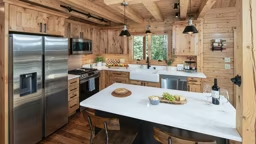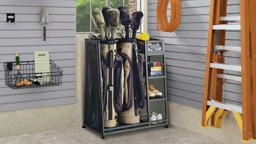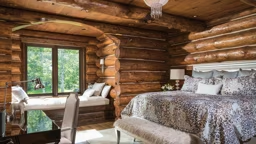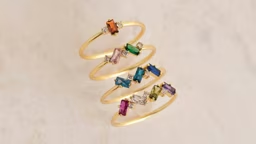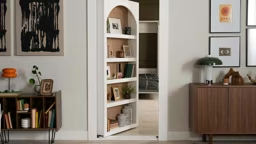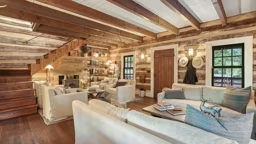 Often overlooked for her skills as a florist, Mother Nature can provide breathtaking decor to your home. Where to get started? Live plants add color to any room and they're fairly inexpensive too— a big plus if you're decorating on a budget. You can begin with some of the classic houseplant favorites, such as spider plants, ficus trees and African violets, but they're just the beginning.
Often overlooked for her skills as a florist, Mother Nature can provide breathtaking decor to your home. Where to get started? Live plants add color to any room and they're fairly inexpensive too— a big plus if you're decorating on a budget. You can begin with some of the classic houseplant favorites, such as spider plants, ficus trees and African violets, but they're just the beginning. Check your local florist shop or greenhouse, and you'll find many other options to expand your collection. Splurge on one or two large plants, if you like, but I prefer to pick a half-dozen or so smaller plants to provide a variety of heights and colors.
Adding seasonal plants to your basic collection is an excellent way to create contrasts in your indoor garden. Florist's cyclamen, on their other hand, with its nodding pink, red or white flowers and silver-mottled leaves, is a spectacular choice.
If you're an avid (and organized) outdoor gardener, consider potting some of your favorite annuals before the first frost. Begonias, impatiens and geraniums are just a few plants that easily make the transition indoors, and they'll continue to bloom through the winter months. Come spring, just set them outside again, and you can keep them going year after year.
Colorful Leaves While flowering plants are undeniably flashy, carefully chosen foliage plants can give their showy cousins a run for their money. Crotons, for instance, can have shades of green, yellow, red, pink and orange all in one leaf! Add in the fact that every leaf has a slightly different coloration, and you have a handsome houseplant that is sure to catch the eye of any visitor. Many other foliage plants also offer multi-colored leaves, with stripes, spots and splashes of white, silver or yellow against the usual green background.
Making Scents Color, of course, is a key consideration when you're decorating with plants, but there are certain beauties that offer something beyond mere good looks: They smell great, too! Gardenias and star jasmine are two favorites for fragrant flowers, and just a few blossoms can perfume an entire room.
Leaves can be aromatic, as well, and my favorite of the fragrant foliage plants is scented geraniums. Unlike the traditional red window box geraniums, which have a rather sharp, nose-wrinkling aroma, scented geraniums come in a dizzying variety of delightful fragrances, from lemon, rose and apple, to coconut, nutmeg, peppermint and even strawberry. And don't overlook garden herbs, such as bay laurel, rosemary, basil and chives. They are ideal for adding color and fragrance to a sunny kitchen windowsill, and they'll be within easy reach for cooking, too!
Creating the Setting A single large houseplant makes a statement on its own, but small plants can look like afterthoughts when scattered here and there throughout the home. Instead, consider consolidating your houseplants into one or two main groupings in a large space, such as a family room or great room. This not only gives your plants greater presence, it makes them much easier to care for. (Just think: No more wandering all through the house with a dripping watering can, hoping you didn't miss any thirsty plants!)
Another way to have fun decorating with plants and flowers is experimenting with different containers. Decorative flowerpots come in a wide range of materials and colors, so you're sure to find one that complements your decor. Unusual containers, such as baskets, ceramic pots and brass or copper pans, can also look fantastic with plants growing in them. Just set a waterproof liner in the container before you slip a potted plant into it and you won't have to worry about it being damaged by the water or potting soil.
Looking to liven up an expanse of railing around a loft or landing? Garden centers sell a variety of brackets tailor-made for hanging pots or window boxes from deck railings. If you try this scheme, buy containers without drainage holes, so you don't end up watering the family and furniture on the first floor. Keep the plants themselves in their own smaller pots. That way, you can lift them out and drain off any moisture that collects in the container after you water them.
Easy-Care Flowers If you're looking for low-maintenance floral decorations then dried flowers might be a good option. They're not only easy to care for, they're also a great choice for dark spots where live plants just won't thrive, or places like a vacation cabin where regular watering isn't practical.
Many common garden flowers dry well, but you can also purchase beautifully preserved blooms, grains, grasses and leaves at most craft stores. Also craft fairs often sell ready-made dried flower decorations, such as wreaths, swags and arrangements.
One thing to keep in mind about dried flowers: Even though they require little upkeep, they won't last forever. It's tough to dust them without breaking the petals and stems, and even the brightest blooms will fade after a few months in a bright room. So plan on enjoying your dried arrangements for a season or two, then replace them with something new that catches your eye.
Whether you choose live plants, their dried counterparts or even a combination of the two, you'll find these natural materials offer many decorating options. After all, what better way is there to enhance the natural beauty of your log home than with the bounty of Mother Nature herself?




